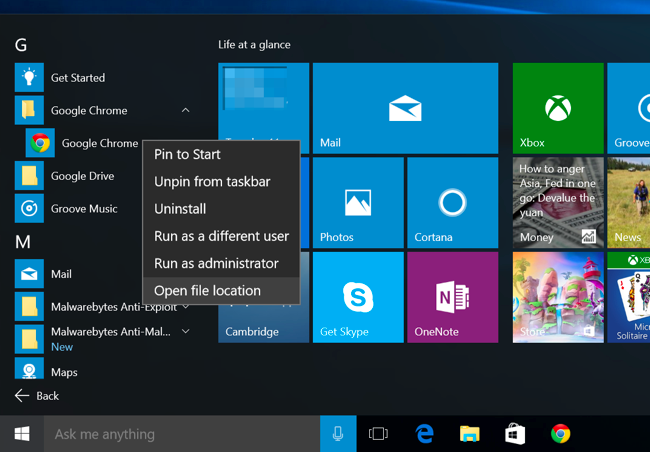

Search for the App in the Start Menu, right-click on it and select the Option Pin to start.You can use this Shortcut like any other Windows Shortcut.Windows will create a Desktop Shortcut for that Store App.In the Prompt: Do you want the shortcut to be placed on the desktop istead?, click Yes.In the Folder, find the App you want to create the Shortcut for.Store App Shortcut open Applications Folder.

Locate an app and then click and drag it to the desktop, as with the item called Link.
ADD WINDOWS 10 APP SHORTCUT TO DESKTOP UPDATE
Additionally, all the Store Apps are automatically updated in the Background so that you no longer have to deal with the individual Update or Upgrade Prompts. Click the Windows key, and then browse to the Office program for which you want to create a desktop shortcut.The best Thing about the Microsoft Store is that it makes installing and uninstalling Apps easy and Clutter-free.StartMenuDir – If there is potentially a conflict between local apps and remote apps, then you should place the Start Menu shortcuts in a folder.Ĥ.If you import the receiver.admx (and .adml) into the PolicyDefinitions folder, under Computer Configuration > Administrative Templates > Citrix Components > Citrix Receiver is a new node called SelfService.ĭisable the Manage SelfServiceMode setting to hide the Receiver Window.Įnable the Manage App shortcut setting to control placement of shortcuts.How to create a Desktop Shortcut for Windows Store Apps.DesktopDir – Receiver places every shortcut on the desktop so it’s probably best to place them in a folder.PutShortcutsOnDesktop – set to True to place every app on the desktop.More details in Configuring application delivery at Citrix Docs. SelfServiceMode – set to False so Receiver disables the Self-Service interface and automatically places all published shortcuts on the Start Menu and/or Desktop.Some of the settings only apply if SelfServiceMode is set to False. This only works if the app is a Favorite, or if Favorites are disabled, or Mandatory Store.ģ.Under HKLM\Software\Wow6432Node\Citrix\Dazzle (or HKCU\Software\Wow6432Node\Citrix\Dazzle) are several registry values related to shortcuts. Receiver 4.5 and newer supports published app Delivery configuration for adding the shortcut to the desktop.Published App Keywords (e.g. prefer or mandatory).From StoreFront in C:\inetpub\wwwroot\Citrix\Roaming\web.config.Right-click the Receiver icon, click Advanced Preferences, and then click Settings Option.Ģ.From Citrix Docs Configuring application delivery: There are several methods of controlling how Receiver displays shortcuts on the Start Menu and Desktop as detailed below: Receiver 4.5 and newer has a user interface for setting Shortcut Paths. To subscribe specific applications ,administrator can use KEYWORDS in the application properties from Studio.ġ.

This disables the SelfService UI and all apps are subscribed automatically. In this mode all apps are subscribed automatically. To subscribe all the applications disable the self service mode. Detailed instructions can be found at Citrix eDocs - Configure Receiver for WindowsĪ user has to subscribe an application if they want it to be present as desktop shortcut. This article describes the general steps to configure Receiver to Application Shortcuts where you might want them. Īlternatively, where you have large numbers of applications that would clog the Start Menu or you have users wanting to choose their favorite applications, you can configure Receiver for Windows to enable the user to select the applications they want to see in their Start menu. Non-admin users must contact their company’s Help Desk/IT support team and can refer to CTX297149 for more information.Īs a Receiver administrator, you can configure Receiver for Windows 4.x to automatically place application and desktop shortcuts directly in the Start menu or on the desktop. This article is intended for Citrix administrators and technical teams only.


 0 kommentar(er)
0 kommentar(er)
